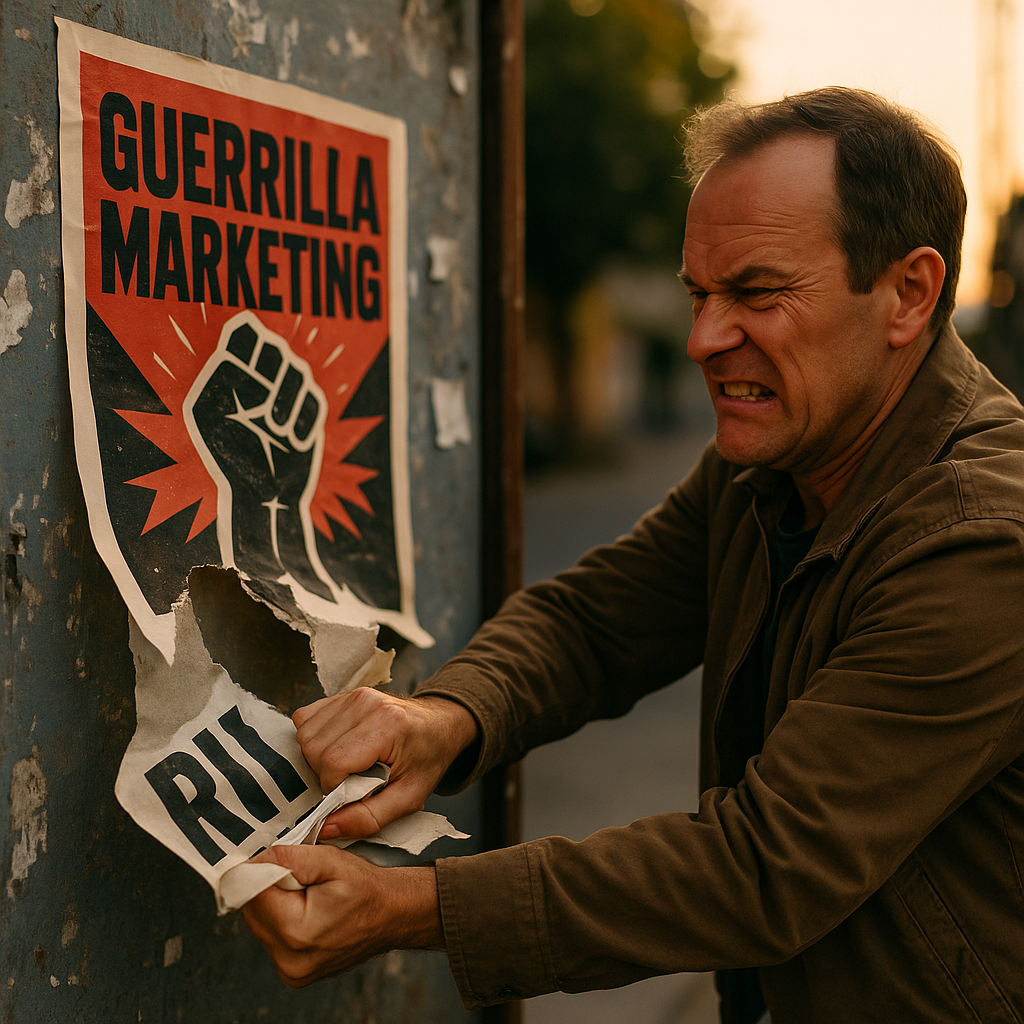When executed properly, guerrilla marketing captures attention and builds brand buzz. But sometimes, creative campaigns backfire, offending the very audience they target. In this post-mortem, we’ll dive deep into a guerrilla marketing campaign gone wrong, analyze why it misfired, and extract valuable lessons marketers can apply to avoid similar pitfalls.
What Went Wrong: The Anatomy of the Guerrilla Marketing Mistake
Guerrilla marketing is all about disruption—surprising audiences in unconventional ways. However, the approach used by a major soft drink company in early 2025 pushed the boundaries too far. The campaign, designed for virality, featured provocative street installations that unintentionally mocked local cultural traditions. What was meant as edgy humor came across as deeply insensitive, triggering widespread criticism on social media.
This backlash wasn’t just limited to negative tweets. Influential community leaders condemned the campaign, and several grassroots organizations organized protests at brand locations. Real-world consequences quickly followed: plummeting local sales and a wave of customer complaints.
Understanding Audience Sensitivity: Essential for Brand Reputation
The debacle highlighted why audience sensitivity is foundational in guerrilla marketing strategy. In an increasingly connected and vocal world, misreading the audience’s values can turn potential advocates into vocal detractors. According to a 2025 marketing survey by DataTrust Insights, 88% of consumers said they stop supporting brands that offend their beliefs or insult their communities.
While edgy campaigns capture attention, a fine line separates boldness from insensitivity. This incident shows how failure to conduct robust cultural and social research breeds avoidable PR disasters. Listening to local voices and running diverse focus groups can help uncover sensitive touchpoints before launch.
Backlash Management: Crisis Response in Digital PR
Once the offensive guerrilla marketing campaign took off, the brand’s initial response was dismissive, attributing criticism to a “lack of humor.” This fueled further outrage. Only after the story reached national news did the company issue an apology and commence the removal of street installations. This delay significantly extended negative media coverage.
Effective crisis response can mitigate fallout from marketing missteps. Digital PR best practices advocate for immediate acknowledgment, transparent communication, and demonstrable corrective action. According to PRWeek’s 2025 report, brands that respond to backlash within 24 hours recover 55% faster than those that delay.
Long-Term Brand Implications: Rebuilding Trust After Offense
The fallout from an offensive campaign lingers long after the initial controversy wanes. The impacted soft drink company had to invest in community outreach, retrain marketing staff, and revamp creative processes. Consumer trust, once lost, is slow and expensive to rebuild. In fact, TrustPulse’s 2025 consumer trust index found that 73% of customers are reluctant to forgive brands for cultural missteps without clear evidence of learning and change.
Repairing reputation involves:
- Publicly committing to updated ethical guidelines
- Creating advisory panels with diverse community members
- Transparent sharing of lessons learned with the audience
- Demonstrating ongoing social responsibility
This multifaceted approach shows accountability and commitment to positive change, necessary for winning back skeptical consumers.
Preventing Future Offense: Guerrilla Marketing and Cultural Intelligence
Guerrilla marketing flourishes when it’s creative, memorable, and relevant. Preventing missteps means institutionalizing cultural intelligence throughout campaign ideation and execution. Brands now deploy advanced sentiment analysis tools to assess likely public reaction to campaign concepts. Insights from CultureTrack 2025 reveal that campaigns informed by real-time, localized feedback outperform generic creative by 41% in positive engagement metrics.
Here are actionable steps to put cultural intelligence at the heart of guerrilla marketing:
- Embed cross-cultural advisors in creative teams
- Prototype campaigns with diverse, local focus groups
- Conduct scenario planning for possible backlash
- Plan rapid response protocols for digital PR teams
With these safeguards, brands can remain daring without crossing the line, earning both attention and long-term loyalty.
Conclusion: Guerrilla Marketing Must Balance Boldness and Respect
Bold guerrilla marketing delivers exceptional brand awareness, but only when it respects the audience’s values and sensitivities. This post-mortem shows that cultural blindness can turn creativity into crisis. Marketers who invest in deep audience understanding and build agile crisis management stand to reap the rewards—while avoiding costly backlash.
FAQs: Lessons from a Failed Guerrilla Marketing Campaign
-
What is guerrilla marketing?
Guerrilla marketing uses unconventional, low-cost tactics to surprise and engage audiences, aiming for strong word-of-mouth and viral attention. Its effectiveness relies on creativity and cultural relevance.
-
Why do guerrilla marketing campaigns sometimes offend audiences?
Offense occurs when brands misjudge local values, cultural norms, or sensitive issues. Without detailed audience research, playful tactics can come across as disrespectful or tone deaf.
-
How should a brand respond if its campaign generates backlash?
Brands should act quickly: acknowledge the offense, issue a sincere apology, pull problematic content, and communicate steps to prevent future issues. Transparency and accountability are key for reputation recovery.
-
What steps can brands take to prevent offending audiences in future campaigns?
Best practices include building diverse creative teams, prototyping with local focus groups, using sentiment analysis, and planning crisis response in advance. Cultural intelligence must guide the entire process.
-
Can brands fully recover from an offensive marketing campaign?
Recovery is possible, but it requires sustained effort, public accountability, community engagement, and evidence of lasting change to restore trust and loyalty.
